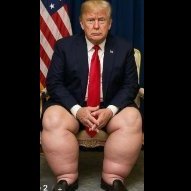Boiling jug electrical issue
-
Recently Browsing 0 members
- No registered users viewing this page.
-
Topics
-
-
Popular Contributors
-
-
Latest posts...
-
0
Russia in Flames as Ukraine Blitzes Oil Refineries
A massive mushroom cloud lit up the Russian skyline after a Ukrainian drone blitz rocked a key oil refinery in the early hours of Saturday — in a fiery strike that’s left Putin reeling. The Novokuybyshevsk oil plant in Samara — a major supplier of aviation fuel for Russian warplanes — was engulfed in a colossal fireball after a direct hit, with flames shooting 590ft into the air, according to Ukrainian sources. Boasting on Telegram, Ukraine’s Exilenova+ channel claimed the inferno was "the size of 109 Putins" — cheekily measuring the Russian leader at 5ft 5in. It’s part of a dramatic wave of overnight Ukrainian attacks targeting Russia’s war machine — from oil depots and radar stations to airfields and defence plants — just days after ex-U.S. President Donald Trump moved nuclear submarines closer to Russian waters, following fresh war threats from Kremlin hardliner Dmitry Medvedev. The coordinated assault saw: Ryazan oil refinery — vital for Moscow’s fuel supply — erupt in flames. Primorsko-Akhtarsk airfield, in the Krasnodar region, blaze near facilities used for drone attacks on Ukraine. A major radar station near Feodosia in occupied Crimea struck, including military unit 66571 — home to radio stations housed in enormous dome structures, one the size of a nine-storey block. Tepe-Oba mountain range, also in Crimea, left burning after strikes. The Electropribor plant in Penza hit by Ukrainian drones, with reports of eight explosions before the facility — which produces encrypted comms gear for Putin’s army — went up in flames. One woman was confirmed dead. A radar factory in Penza also took damage — its second strike in just three days. Rostov region also came under fire, with at least one fatality reported. The onslaught comes amid a deepening war of words between Medvedev and Trump, raising fears of escalation. Medvedev — a close Putin ally and former Russian president — recently warned that conflict with the U.S. could become “inevitable.” With Ukraine showing it can strike deep inside Russia and target the backbone of its military infrastructure, Saturday’s attacks mark one of the most aggressive and symbolic blows yet. And with multiple fires still raging, questions are growing over the Kremlin’s ability to defend its own soil — as the war enters a dangerous new phase. Adapted by ASEAN Now from The Express 2025-08-02 -
8
Dumbest tariff ever?
All the fatties are going to have to make do with a McChicken sandwich. -
26
USA Gishlaine Maxwell Moved to Low-Security Prison in Texas
Spare me your faux outrage.😄 Useful idiots like you are exactly why the real villains get away with it. "Hey look over here. We got the bad girl. You're all safe now. Move along". A deflection to fool the easily distracted. Sure she deserves jail for hiring prostitutes that turned out to be under 21. But giving her a crazy sentence doesn't mean the case is solved. She's low hanging fruit and you fell for it. Fools like you signal your virtue by pretending to be outraged by Maxwell while ignoring who she hired them for. It's almost as bad as focusing on Amazon for selling the knife to Rudakabana in the review of the Southport massacre. Not only pathetic and disingenuous but stupid beyond belief. You probably think Epstein committed suicide as well. You certainly ignore why Biden also didn't release the files. But America needs people like you. Well done. The guys who were actually raping them are grateful for your assistance to deflect all of this to the female foreigner. 😀 -
29
Gaza crisis deepens as Netanyahu pushes annexation plan
Many, according to HRW, Amnesty Int, B'ts, Oxfam. More importantly, the United Nations Human Rights Council 🙂 Sources in the links. 🙂 You support the hunting down and killing of the Israelis responsible for these war crimes, if they don't surrender to face justice, right? 🙂 "Those who committed war crimes need to face justice . As they wont surrender to face justice, then killing them is the only way to bring them to justice " -
35
-
31
Thai Import Duties On Wine
Import duties are 0% but they are subject to excise charges and local taxes.
-
-
Popular in The Pub

.thumb.jpg.3ee24d9400fb02605ea21bc13b1bf901.jpg)





Recommended Posts
Create an account or sign in to comment
You need to be a member in order to leave a comment
Create an account
Sign up for a new account in our community. It's easy!
Register a new accountSign in
Already have an account? Sign in here.
Sign In Now